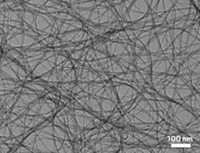Advertisement
Grab your lab coat. Let's get started
Welcome!
Welcome!
Create an account below to get 6 C&EN articles per month, receive newsletters and more - all free.
It seems this is your first time logging in online. Please enter the following information to continue.
As an ACS member you automatically get access to this site. All we need is few more details to create your reading experience.
Not you? Sign in with a different account.
Not you? Sign in with a different account.
ERROR 1
ERROR 1
ERROR 2
ERROR 2
ERROR 2
ERROR 2
ERROR 2
Password and Confirm password must match.
If you have an ACS member number, please enter it here so we can link this account to your membership. (optional)
ERROR 2
ACS values your privacy. By submitting your information, you are gaining access to C&EN and subscribing to our weekly newsletter. We use the information you provide to make your reading experience better, and we will never sell your data to third party members.
Business
Albany Region Fosters Nanotech Start-Ups
by Marc S. Reisch
January 22, 2007
| A version of this story appeared in
Volume 85, Issue 4
Applied NanoWorks and Starfire Systems are two start-up firms in the Albany, N.Y., region that are trying to commercialize new products based on the tools of nanotechnology.
Both Applied NanoWorks and Starfire got their start with intellectual property developed at an Albany-area academic institution, won economic development grants from New York state agencies, and attracted venture capital from local firms.
Applied Nanoworks is the younger of the two firms. Eric H. Burnett, president and chief executive officer, says he started out four years ago with licenses for two technologies patented by Rensselaer Polytechnic Institute. The developer of those patents, Rensselaer associate professor Partha S. Dutta, is now on leave from the university to work as Applied NanoWorks' chief technology officer.
With 12 people on staff, "our mission," Burnett says, "is to develop large-scale manufacturing technologies for unique nanomaterials." These materials include nanooxides and nanophosphors produced in sizes in the 2–50-nm range. The firm has developed three product families: optically clear metal oxides for ultraviolet-light-blocking coatings, nanophosphors for general lighting and display backlighting, and nanoscale abrasives used in manufacturing integrated circuits. Although Burnett won't reveal the firm's current annual sales, he expects them to reach $50 million in the next three to five years.
To develop its product line, Applied NanoWorks has counted on both state aid and venture capital funding. For instance, a $700,000 grant from the New York State Office of Science, Technology & Academic Research (NYSTAR) helped fund the firm's work on abrasives. New York State's Energy Research & Development Agency (NYSERDA) provided funding to the tune of $250,000 to help the company improve nanophosphors for the lighting market.
In addition, Applied NanoWorks has 4,000 sq ft of office and wet lab space in a building operated as a small-company incubator facility by SUNY, Albany. The site was once inhabited by Sterling Drug, which Eastman Kodak acquired in 1988.
Private funding came by way of High Peak Ventures and FA Technology Ventures, local venture capital firms that led an effort to raise $2 million for Applied NanoWorks a year ago.
Starfire Systems is a 10-year-old company based on ceramic polymer technology that also came out of Rensselaer Polytechnic Institute. The firm manufactures a polycarbosilane prepolymer, developed by Rensselaer chemistry professor Leonard V. Interrante and his student Christopher Whitmarsh, that cures in a kiln to form a nanostructured silicone carbide ceramic.
According to Starfire President and CEO Richard M. Saburro, the firm now has 32 employees. Revenues from products and research contracts were $3.4 million in 2006, but he expects that number to double in 2007 and then continue to double for each of the next several years.
The company's ceramic polymers can be used to make aircraft components and lightweight rotors for car, bus, and train brakes. A kit incorporating the unique polymers will be used by the National Aeronautics & Space Administration on future space-shuttle flights to seal cracks on the shuttle's heat-shielding tiles. The company is also promoting the use of the ceramic polymers in a new generation of computer chip boards that won't warp in new high-temperature manufacturing processes.
To date, the firm has raised $12 million from investors including Swiss specialty chemical maker Clariant, with which Starfire has a research and marketing alliance, and Harris & Harris Group, a New York City-based venture capital fund that specializes in nanotechnology investments. The company has also undertaken R&D contracts that have brought in another $12 million including, for instance, a $500,000 grant last year from NYSTAR to commercialize microprocessor-insulating materials.
The State of New York is also Starfire's landlord. The firm's offices are located in the heavily wooded Saratoga Technology & Energy Park in Malta, N.Y., in a 15,000-sq-ft facility rented from NYSERDA. A $3.2 billion computer chip factory planned by California-based Advanced Micro Devices will be about a mile down the road. To accommodate growth, Starfire plans to move soon to 25,000 sq ft of space in a building now under construction in the park.
The firm is fast approaching a stage where venture funding won't be enough to take it to the next level, Saburro says. In the months ahead, the firm plans to raise another $7 million to $10 million. And when that money runs out, perhaps in two years, the firm will look to an initial public offering or to being acquired by a larger firm.
"Our technology is just now getting wide recognition," Saburro says. With the right funding, he adds, he is sure that "Starfire can really drive advanced ceramics growth."
Read More
- Albany Region Fosters Nanotech Start-Ups
- Nano Goes Big Time
- New York and other states dole out big bucks to boost nanotechnology





Join the conversation
Contact the reporter
Submit a Letter to the Editor for publication
Engage with us on Twitter